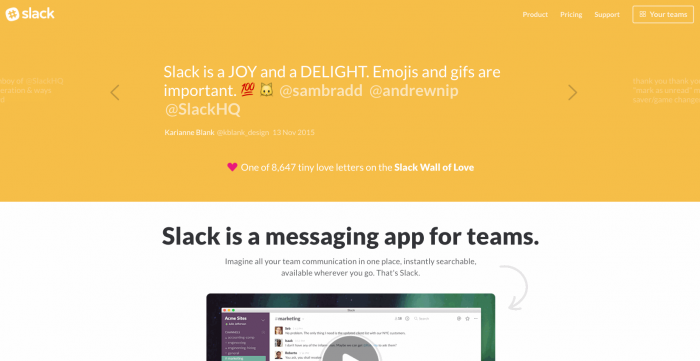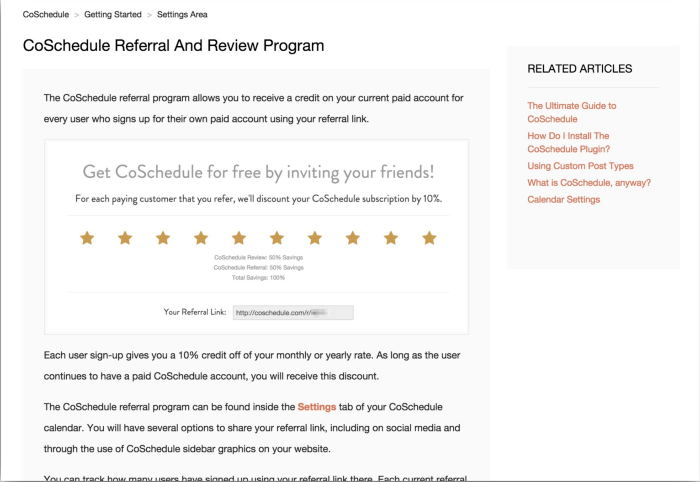Winning over prospects is hard. And cold prospects are the most difficult.
Most of the people on your list don’t even care to see your email in their inbox, and many of them won’t respond for that reason.
You did the best you could with market research and prospecting and trying to understand who your ideal client is. But still, people aren’t responding the way you had originally hoped they would.
Why not?
The point is, all of your prospects are different, and lumping them into general categories doesn’t always benefit your campaign.
Here’s what you can do that is guaranteed to help: Add social proof.
Yep. It’s that simple.
73% of consumers say positive customer reviews make them trust a business more, 79% trust online reviews as much as personal recommendations, and 72% have recommended a business by word of mouth.

In other words, regardless of your audience, you need to add some social proof.
But what exactly is social proof?
Today, that’s what we’re going to talk about.
What Is Social Proof?
At its core, social proof is building trust around a product or service by using other people as evidence.
I know, that sounds kind of vague.
But the definition is vague because there are so many different types of social proof. In this article, we’ll look at five different kinds of social proof and how they often appear in basic marketing campaigns.
Then, in part two, we’ll look at exactly how you can apply social proof to your cold and warm email prospecting. In other words, how do you take the best lessons from today’s marketers and use them in your cold emails?
That’s what we’re going to answer.
But first, here’s a quick example of what social proof sometimes looks like, particularly on blog posts or video content.

Have you ever wondered why all of those share numbers are sitting next to the article? Well, it’s not just because numbers are pretty. It’s to convince other people to share, subscribe, and opt-in.
After all, aren’t all of those numbers super convincing?
At the very least, you’ll trust the website and the content they produce. And at best, you’ll share the article, video, or podcast yourself.
Why?
Because everyone else likes it, so you feel safe to participate in the conversation.
Which illustrates exactly what the power of social proof is.
Another example…

Social proof is a method for encouraging people to take action because other people are taking action. When you see something that says, “123k” likes, it makes it statistically more likely that you’ll “like” it as well.
Because, of course, no one likes to be left out.
It’s basic human psychology.

Think about this, for example. You are considering buying the newest iPhone. But you’re not totally sold on it.
You have your friends over for dinner when one of them pulls out their iPhone. You ask them how they like it.
They go on and on about how much they love the newest features and how the iPhone has totally changed their lives and how they don’t know how they ever got on without one.
How does that make you feel about buying the new iPhone?
If you’re like most people, you’ll be at the store the next day.
Simply because your friend told you it’s awesome and you trust your friend. That’s social proof in its simplest version.
But…
Why Does Social Proof Work?
Social proof is effective because it relies on a human instinct to go with the crowd. When we were evolving, this was critical because the pack that sticks together survives. Today, the instinct mostly serves marketers’ agendas.
Additionally, there’s a process to our thinking: data goes in, we sense it, we infer meaning, we formulate intent, and then we turn that interpretation into action.

This means that the data that goes into our brain, once we process it, isn’t objective. Our response is a result of our understanding of the world and how we interpret it.
Which further means that you can use social proof to influence the way people think about your product or service — despite reality.
Every opinion that your prospects currently have was formed by a series of little judgments.
What does your website look like? Which words do you use in your email? What is the button copy of the CTA?
And, most importantly, what do other people think of your product or service?
Kinds of Social Proof and Real-Life Examples
Now, we’ll turn our attention to real-life examples of social proof to help you understand how all of that information translates into marketing in real life.
1. Expert Opinion
The first kind of social proof we’re going to discuss is expert opinion.
This is when the marketer finds someone who is considered an expert regarding the product or service they’re marketing. Then, they include some sort of indication that the expert approves of their product.
This is powerful because people automatically trust the person they think of as an expert. So if you associate your brand with an expert endorsement, people are going to consider your business trustworthy as well.
Take Nature Made’s advertisement as an example.

They use a USP certification statement and icon to show people how pure their gummy vitamins are. And since people trust those official-looking logos on their food, people believe, for better or worse, that Nature Made’s gummy vitamins are better than the next person’s.
In other words, they use the expert opinion of USP to generate trust for their brand.
Similarly, Fitbit, the famous fitness watch company, uses expert opinion to build trust with their brand by putting big publication mentions on their website.

Some of those aren’t even directly related to what Fitbit sells, but all of those expert opinions are compelling incentives for the person who is on the edge about buying one of their watches.
SaaS company 2U does the same thing by placing brand mentions on their website.

Why is everyone utilizing expert opinion?
Because it’s powerful. And expert opinion is one of the most powerful ways to implement social proof. Show people that the experts trust your product, and your prospects will trust it too.
2. Influencer Marketing
Most likely, you’ve heard about influencer marketing.
But did you know that it also qualifies as social proof?
If you think about it, it makes sense.
Influencer marketing is simply a way by which marketers build hype and trust in a product by leveraging a person that many of their ideal clients already trust. Essentially, influencer marketing says, “Look, this person who you like also likes this product! You’ll like it too!”
It’s similar to an expert opinion but different in that the people who are doing the influencing aren’t necessarily experts. They are simply people that the customer base likes. And since they like them, they trust their opinion.
This method for building social proof is wildly common because it’s wildly effective.
Here’s an example of influencer Kate Lavie doing some marketing for the juice company Naked Juice.

Now you might be wondering, how does something so simple help sales?
Well, look at the number of likes she got. That represents over 3,000 people who are interested in what she just said, and that’s only the people who “liked” her post.
Here’s the reality. When people like someone, they want to be similar to that person. And since people like Kate, they might just want to drink the same juice she’s drinking.
Here’s another example where the shoe company Sperry took a picture of an influencer wearing their shoes to create social proof.

If you can find a way to include influencers in your sales pitch, then people will be more likely to commit. After all, if the people they look up to are doing it, why wouldn’t they?
3. Testimonials
You’re familiar with how much incentive testimonials can add to a sales pitch. But have you considered adding them to your cold email campaign?
Unfortunately, many people don’t add testimonials, despite the fact that they’re dead simple to add and crazy powerful.
Even Slack, arguably the most successful platform for business communication, uses testimonials on its homepage.

And the testimonials aren’t just fun. They’re compelling. Many of their testimonials speak to how effective and wonderful the platform is.
If you use them correctly, testimonials make your sales pitch difficult to resist. They show prospects that other people have used your product or service and loved it. Which makes them far more likely to buy.
Amazon, the massive online retailer, does this with all of their products by including star ratings and customer reviews.

Testimonials are perhaps the easiest type of social proof for you to add to your cold emails. And their impact far outweighs the effort they require.
4. “Everyone Else Is Doing It”
There’s no better way to convince people that your product or service is awesome than by convincing them that everyone else is using it.
The human instinct to not be left out and to keep up with the crowd kicks in when you tell someone that they’re missing out on a service that everyone else is using.
One company, Vanity Planet, increased their conversion rate by 24% by adding their customers’ Instagram photos to product descriptions on their website.
This is a subtle way to say, “Look. Everyone else is using this and loves it. Why haven’t you started?”
And that’s a compelling message to send when you’re trying to get someone to convert.
Pura Vida, the online bracelet merchant, does this on their website with these timed pop-ups.

Whenever one of these little social proof nuggets pops up, it makes visitors feel like, “Wow, maybe I’m missing out!”
5. Refer-a-friend Campaigns
The last kind of social proof that we’re going to discuss is the refer-a-friend type.
This is probably the most powerful type of social proof.
And the reason is that people trust their friends more than any other influencer. So if your product or service is recommended to a prospect by a friend, that prospect will be more likely to buy than with any of the other social proof methods.
You trust your friends, right?
Well, so do your prospects.
In fact, 92% of people trust recommendations from people they know.

How do marketers leverage that?
Well, there are a few different ways. But one of the ways is by offering discounts or special offers to people who refer a friend to their product or service.
CoSchedule does this to build their customer base.

By offering a reward to people who invite their friends, you’re not just building a positive relationship with your existing customers. You’re also turning your current customers into more customers by leveraging the fact that people trust their friends.
And if a friend recommends your product, that prospect will trust your business.
Conclusion
Getting prospects to stop ignoring your emails and listen and respond to your pitches is a real pain. Everyone is ignoring you for a different reason, and it’s nearly impossible to determine what that reason is.
But what isn’t impossible and is always effective is implementing social proof into your cold email and marketing campaigns.
First, though, you need to understand exactly what social proof is and how it works. You also need to understand the five types: expert opinion, influencer marketing, testimonials, everyone-is-doing-it, and refer-a-friend campaigns.
Now that you have all of that information, we’ll turn our attention to exactly how you can use social proof in your cold emailing campaigns in part 2.